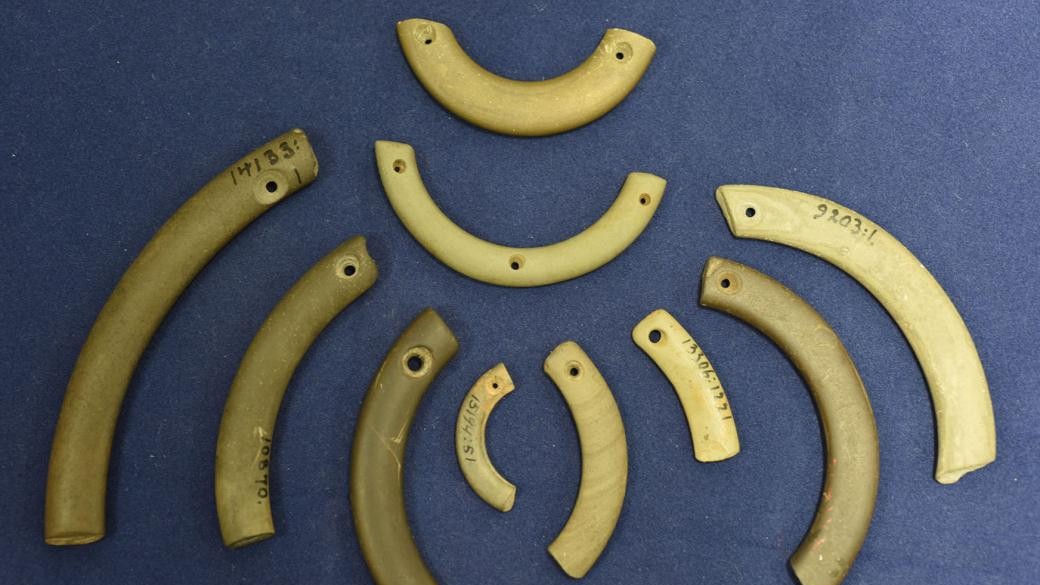Stone Age hunter-gatherers may have exchanged 'BFF' friendship ornaments
The "friendship ornaments" were made out of broken slate rings.

Mysterious ring fragments crafted during the Stone Age are actually prehistoric friendship pendants, a new study suggests. Around 6,000 years ago, hunter-gatherers across northeast Europe likely broke so-called slate rings into pieces that they then crafted into ornaments to share with others as symbols of social relations, the researchers said.
Previously, archaeologists who discovered these slate-ring fragments assumed that the rings had broken into pieces naturally after being buried.
To find evidence that the items had been broken intentionally, the researchers matched pieces of slate-ring ornaments, analyzed their geochemical composition and searched for traces of use, such as one having been worked on more finely than the other — perhaps demonstrating a personal preference.
Related: Ancient burial of fierce female hunter (and her weapons) discovered in Peru
The rings were likely broken and shared between people to symbolize a lasting connection, the researchers said. One fragment was found in a Stone Age settlement, while its matching fragment was found in a nearby burial site, which could be an example of "one way of maintaining connection between the living and the dead," lead author Marja Ahola, postdoctoral researcher in the Department of Cultures Archaeology at the University of Helsinki, said in a statement.
A large number of these fragments were found in "extensive and central locations" in Northeast Europe, possibly suggesting a large exchange network, the statement said. Some of these friendship ornaments originated from Lake Onega in Russia and were transported to Finland, according to an X-ray fluorescence analysis (XRF), which was used to determine the elemental composition of nearly 60 slate ring ornaments or fragments.
During the fourth millennium B.C., "an intensive artefact circulation system existed among the hunter-gatherer peoples of north-eastern Europe," the researchers wrote in the study. "We suggest that the ringed ornaments were — for the most part — never meant to be intact, but were instead fragmented on purpose. It seems likely that these items were used as tokens of some form of social relationship that could have been related e.g. to the circulation system itself."
Sign up for the Live Science daily newsletter now
Get the world’s most fascinating discoveries delivered straight to your inbox.
Ahola's research sheds further light on the complex cultural systems of Nordic Stone Age groups, who were predominantly hunter-gatherers and fishers, according to a study published in 1989 in the Journal of World Prehistory.
The new study was published online March 12 in the Journal of Archaeological Method and Theory.
Originally published on Live Science.

Callum McKelvie is features editor for All About History Magazine. He has a both a Bachelor and Master's degree in History and Media History from Aberystwyth University. He was previously employed as an Editorial Assistant publishing digital versions of historical documents, working alongside museums and archives such as the British Library. He has also previously volunteered for The Soldiers of Gloucestershire Museum, Gloucester Archives and Gloucester Cathedral.









